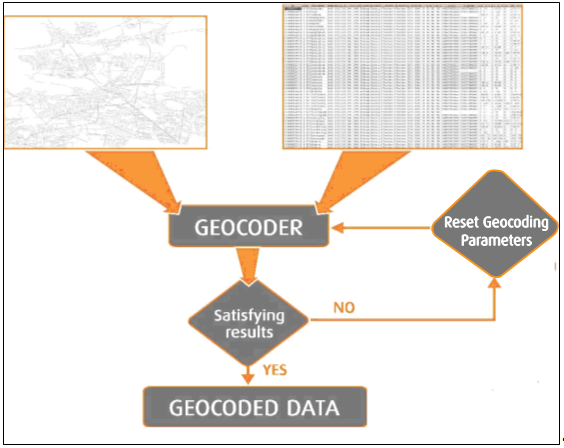Overview
Geocoding is the cross-referencing between geographic spatial data (features with coordinates relative to a standard reference system) and non-geographic data (such as addresses and postal codes).
Geocoding brings geographic data and tabular data together based on a common geographic unit of analysis. A geographic unit of analysis refers to the spatial characteristic within the data that is necessary to locate the data on a map. Such units include addresses (street level) and postal codes (postal district level). This spatial characteristic is common to the geographic data and the non-geographic tabular data. The tabular data also can contain extra, non-geographic information: e.g., telephone numbers, fax numbers, e-mail and website information.
Figure: Geocoding Overview


